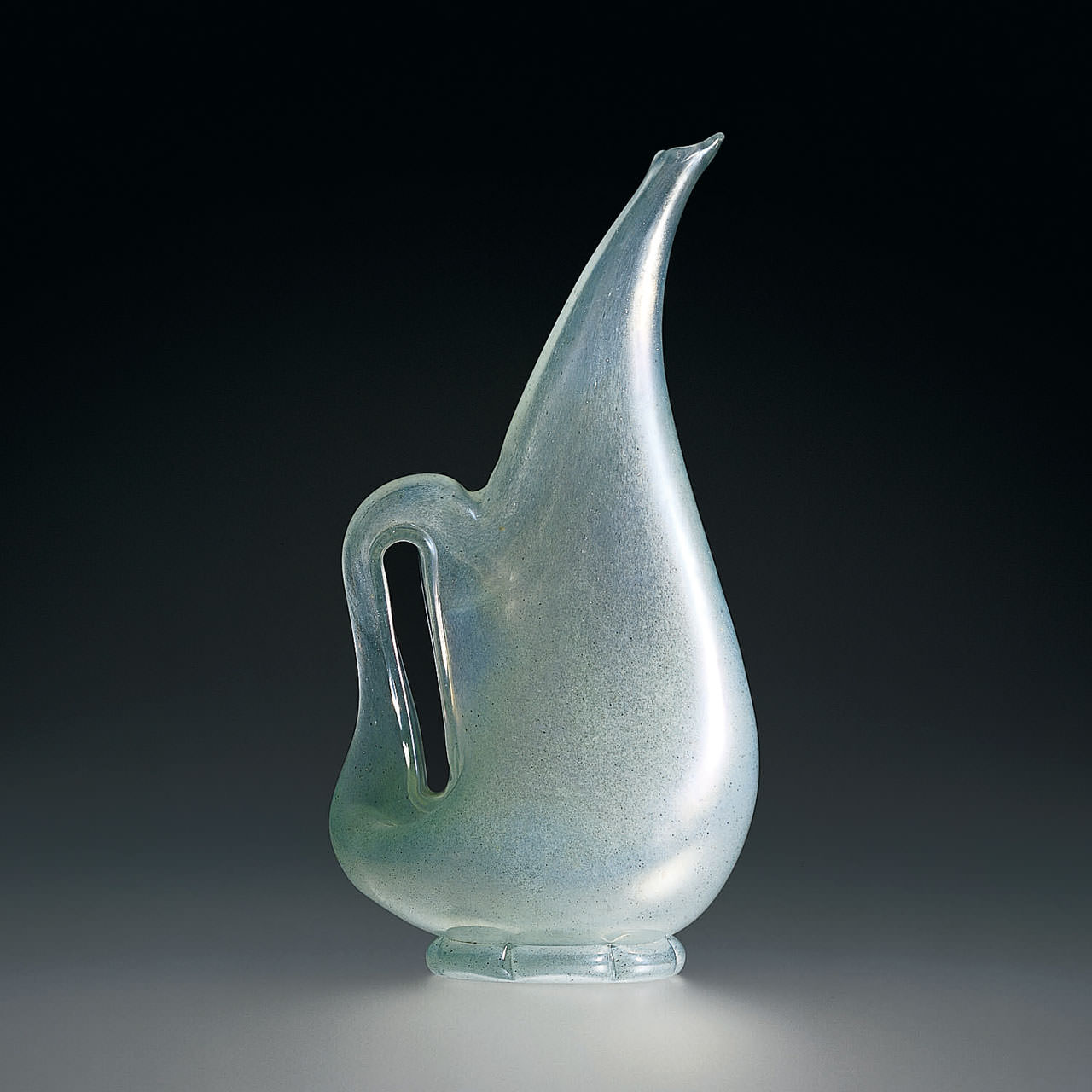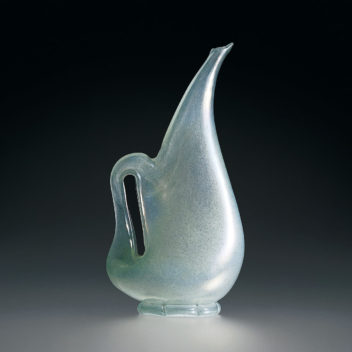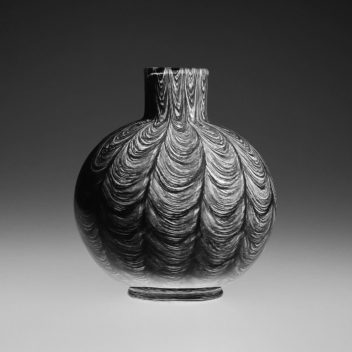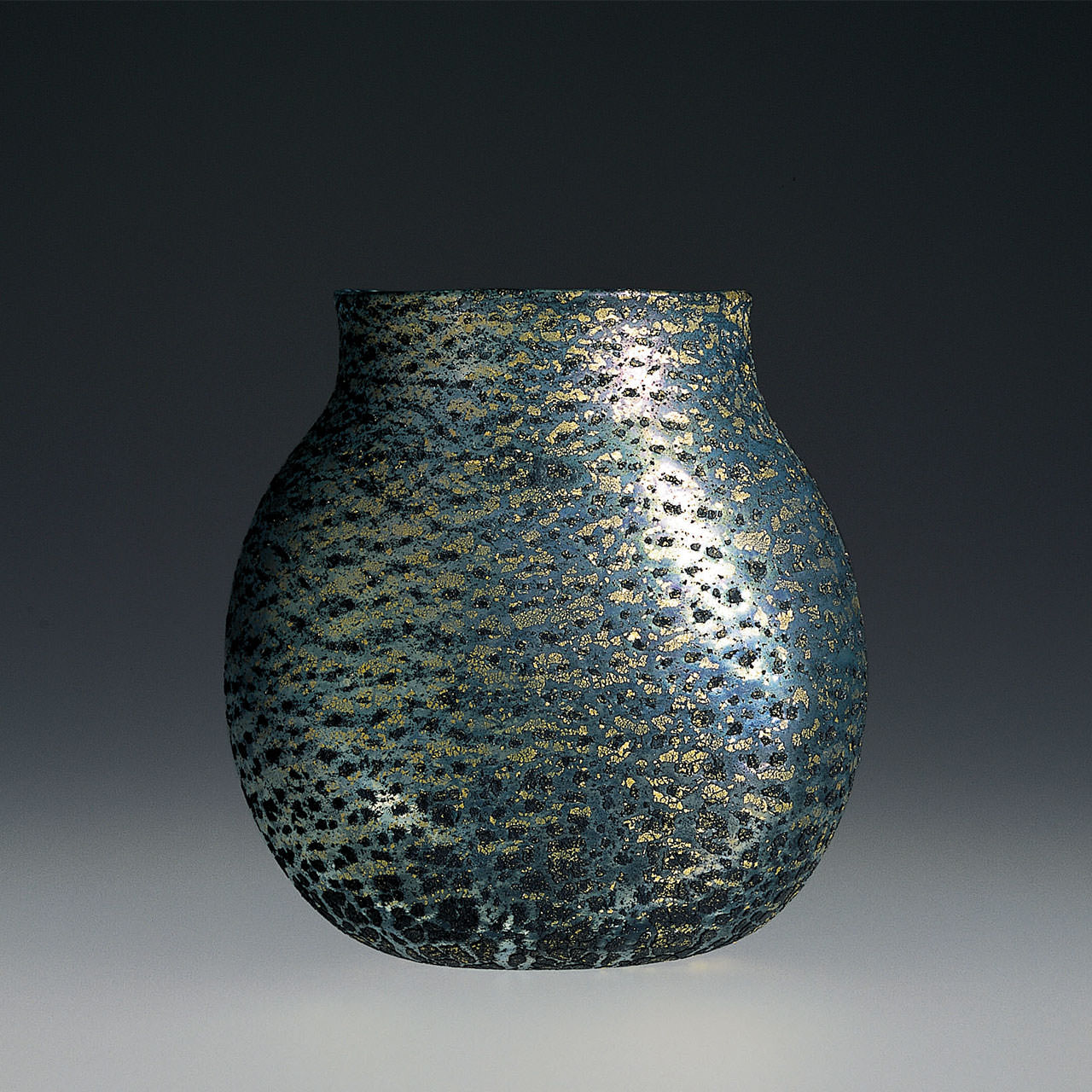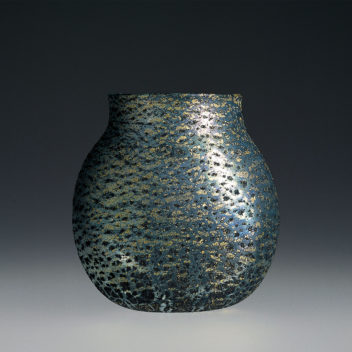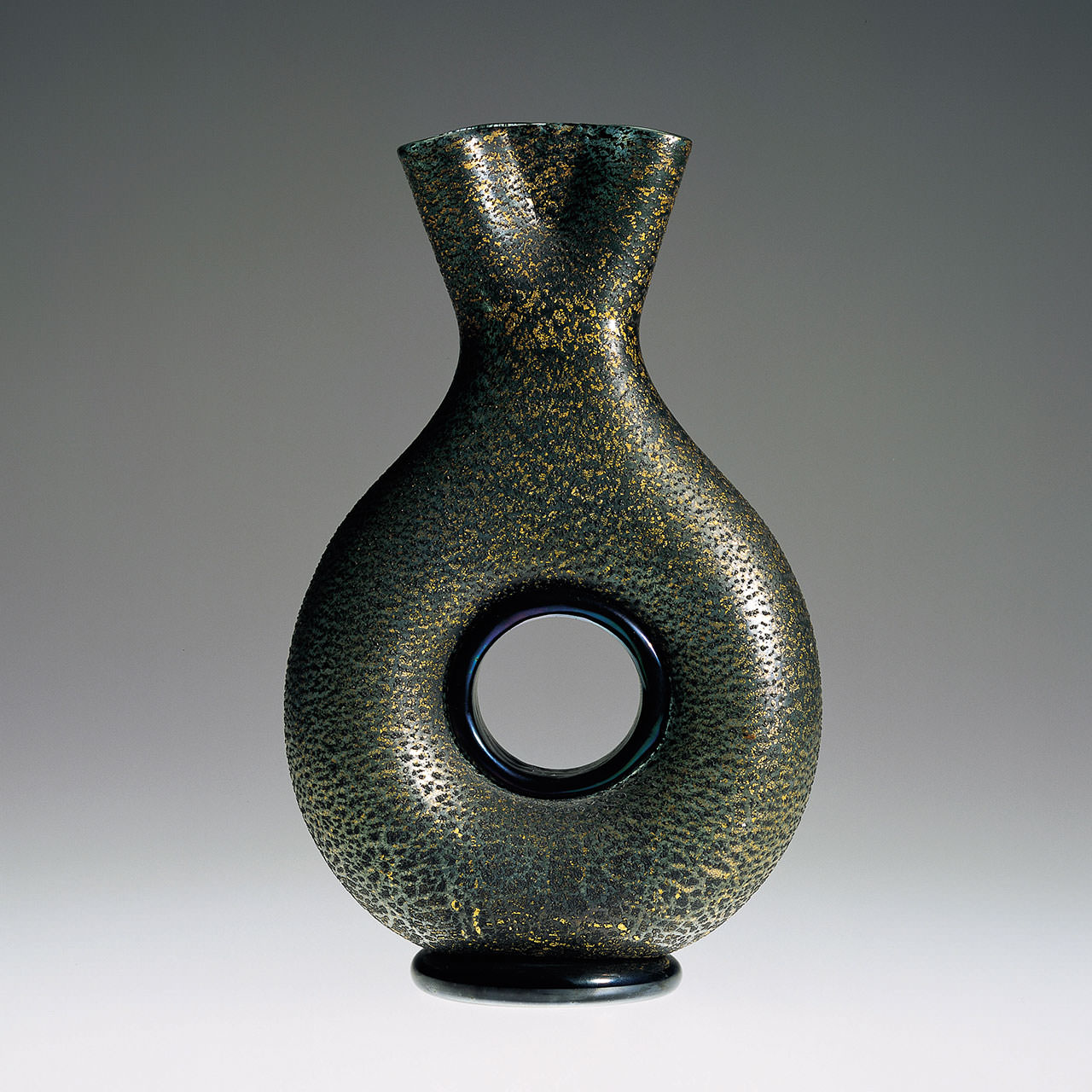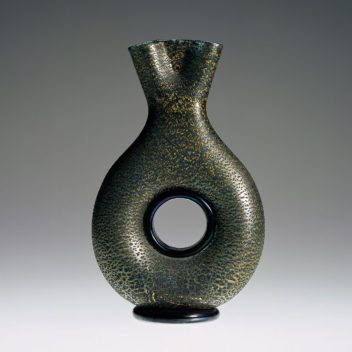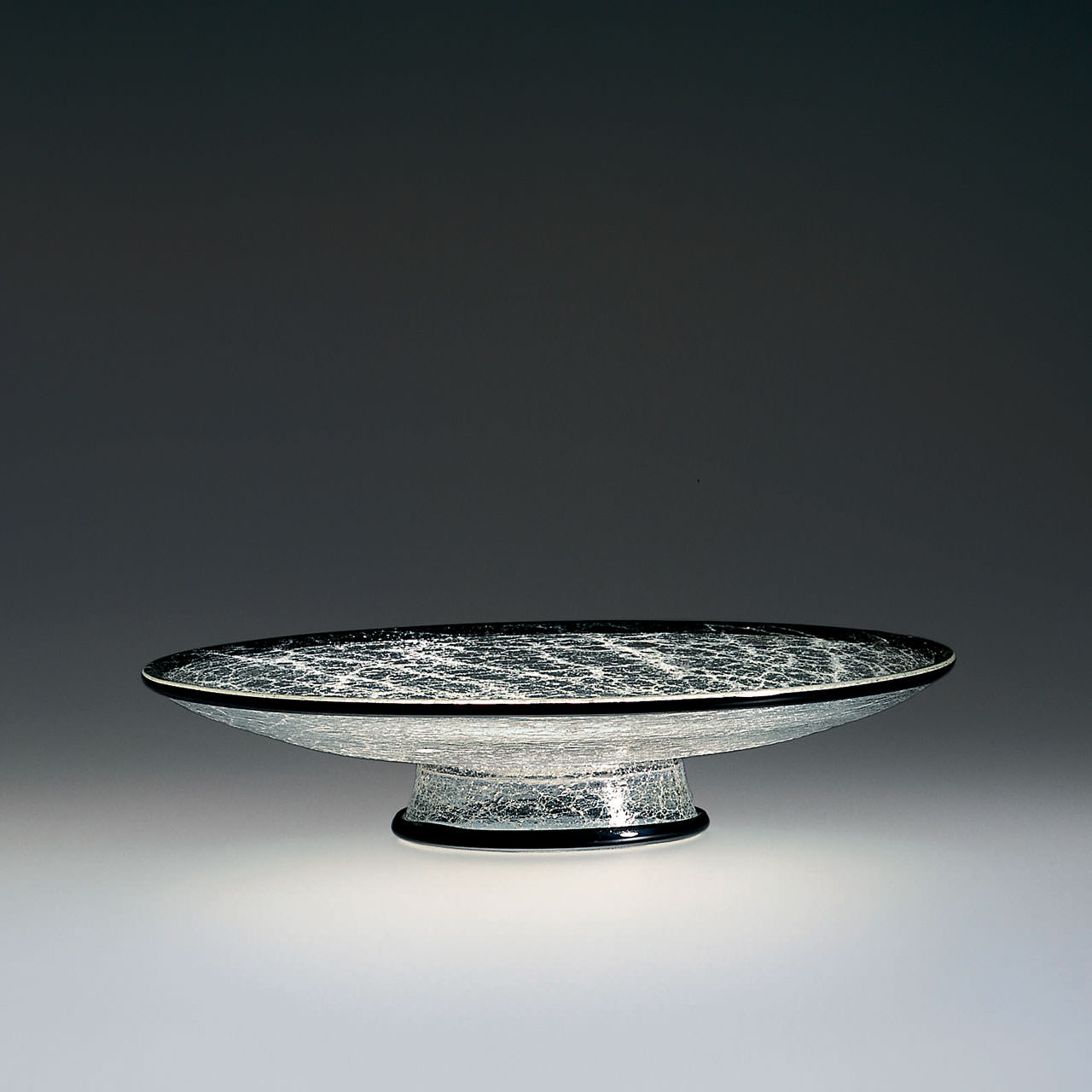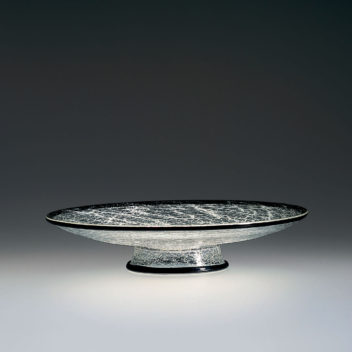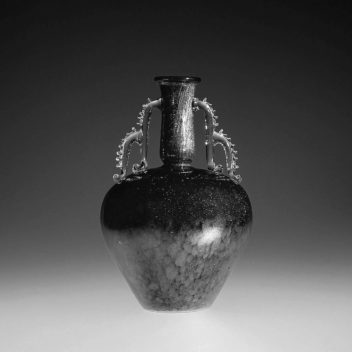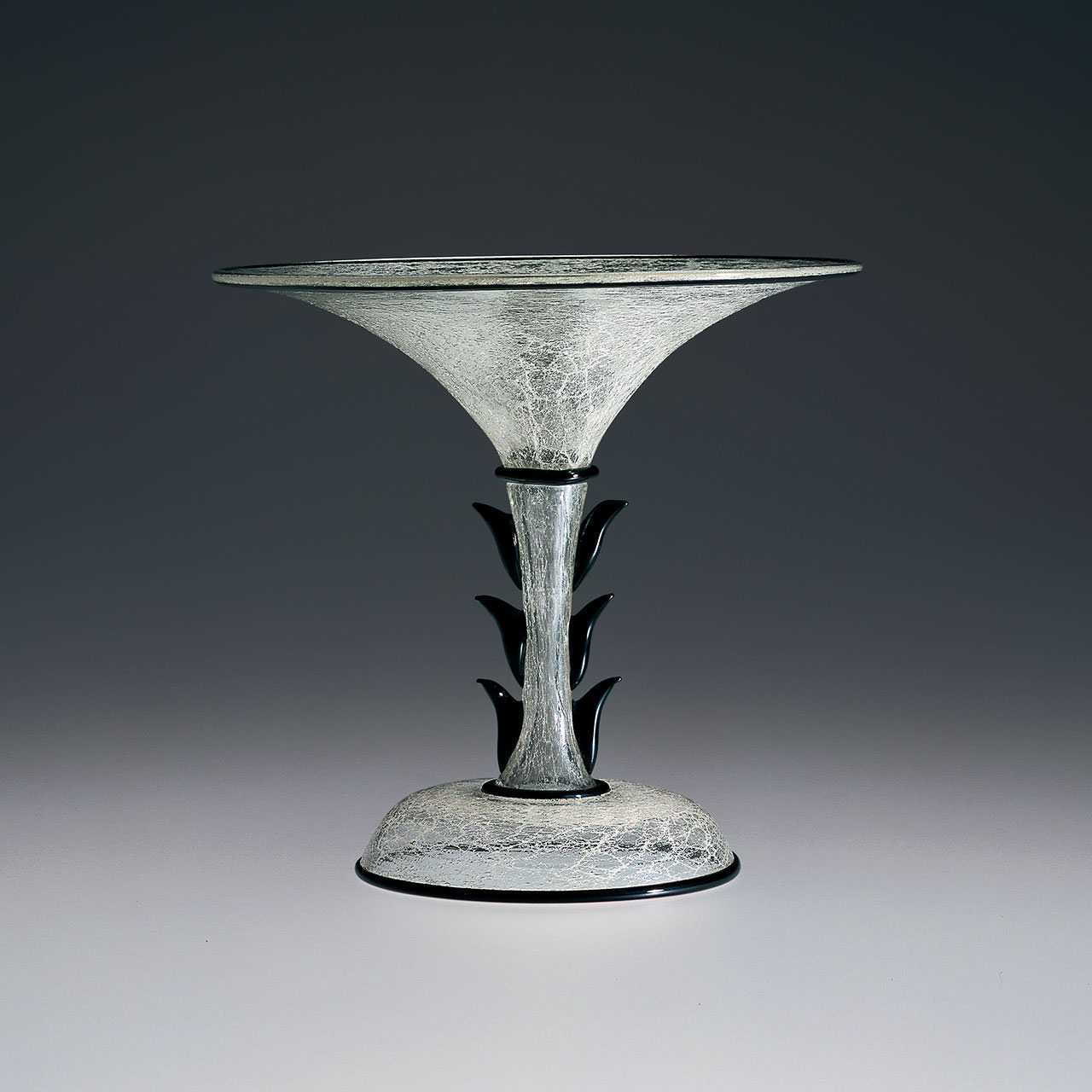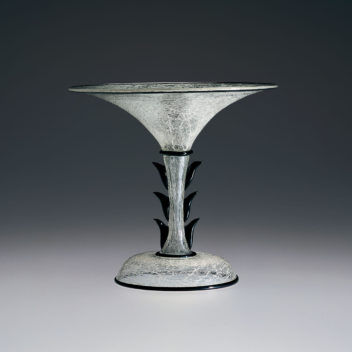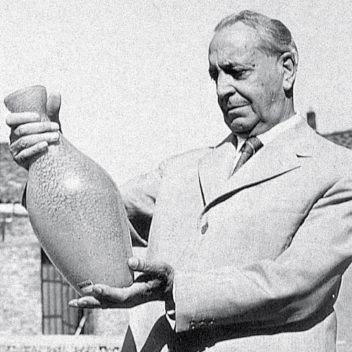
Ercole Barovier 1889–1974
Entrepreneur and designer Ercole Barovier was the son of Benvenuto Barovier. At age 30, he became a partner in his father’s company, the Vetreria Artistica Barovier & C. After becoming its artistic director in 1926, he took over its management with his brother. He became sole proprietor in 1936, engineering the fusion between his own glass workshop and the S.A.I.A.R. Ferro-Toso. In 1942, the new company was renamed Barovier & Toso and Ercole maintained artistic direction until 1972. His first major successes date back to the ’20s; first with the murrine vessels, then with totally original creations such as the Primavera glass collection of 1929-30. After the 30s, he dedicated himself entirely to experimenting with new multi-colored effects. In addition he perfected the colorazione a caldo senza fusione which he first used in 1935-36 to create the series Crepuscolo, Autunno Gemmato, Marina Gemmata, and Laguna Gemmata. Before World War II, he preferred soft shapes and rather thick materials, whereas in the postwar period his interest turned specifically to the field of traditional techniques, which he continued to reinterpret through his very last creations with the series A Tessere in 1972. In the ’50s, his work distinguished itself, both for the vivid quality of its colors as well as for the singularity of the materials noted for the rawness of their surfaces like the barbarici. During the ’60s and ’70s, he gave new interpretations of his a tessere glass with the Dorici, Caccia, Rotellati, and other series, which were characterized by unusual color combinations.
